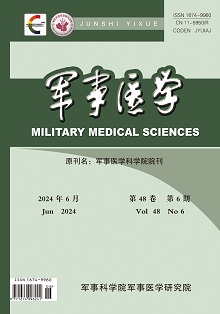Original articles
SU Xian, WANG Bo, LI Dongdong, WANG Lei, QI Fengying, FU Qiuxia, YAN Shaoduo
Objective To investigate the impact of iron overload on apoptosis in primary mouse liver cells via a synchronous separation technology. Methods Hepatocyte (HC), liver sinusoidal endothelial cell (LSEC), and Kupffer cell(KC) were isolated and purified with collagenase, percoll density gradient centrifugation,and CD146 magnetic beads. Cell types were identified using flow cytometry and immunofluorescence staining. Cells of different types were cultured in vitro, and an iron overload model was established by treating the mice with 0, 25, 50 and 100 μmol/L ferric ammonium citrate(FAC) for 24 h. The iron content was quantified using Prussian blue staining, while cell viability and mitochondrial membrane potential were assessed by flow cytometry. Results The synchronous separation technology of primary liver cells exhibited stable efficiency. The yield of HC was (4.0±0.5)×107 cells per mouse, exhibiting an effective survival rate of (76.33±0.67)%.The yield of LSEC was (5.0±1.0)×106 cells per mouse, with a survival rate of (93.63±0.25)% and a purity level of (93.40±0.46)%. The yield of KC was (1.5±0.5)×106 cells per mouse while a high survival rate of (98.33±0.12)% and a purity level of (88.30 ± 2.02)% were maintained.The obtained cells were large in number, with good vitality and high purity, which could meet the requirements of subsequent experiments. Treatment with FAC significantly elevated iron contents in different types of cells when compared with the control group. Upon stimulation of FAC, the survival rate of HC decreased from (73.97±5.54)% to (54.10±1.68)%, the mean fluorescence intensity of JC-1 aggregates decreased from 326.33±30.37 to 155.00±6.56, JC-1 monomer increased from 1700.00±144.04 to 3713.33±81.82. The survival rate of LSEC decreased from (90.60±1.74)% to (78.03±2.15)%, the mean fluorescence intensity of JC-1 aggregates decreased from 502.33±5.51 to 372.33±4.04, and JC-1 monomer increased from 750.00±67.51 to 1340.00±36.39. The survival rate of KC decreased from (94.23±1.44)% to (88.37±1.56)%, the mean fluorescence intensity of JC-1 aggregates decreased from 652.67±25.66 to 478.00±12.49, and JC-1 monomer increased from 1984.33±80.65 to 3062.33±245.20. Conclusion A robust and reliable simultaneous isolation technique of primary mouse HC, LSEC, and KC has been established. Moreover, our finding demonstrates that iron overload significantly enhances apoptosis levels in HC, LSEC and KC.
